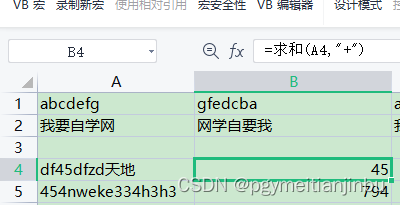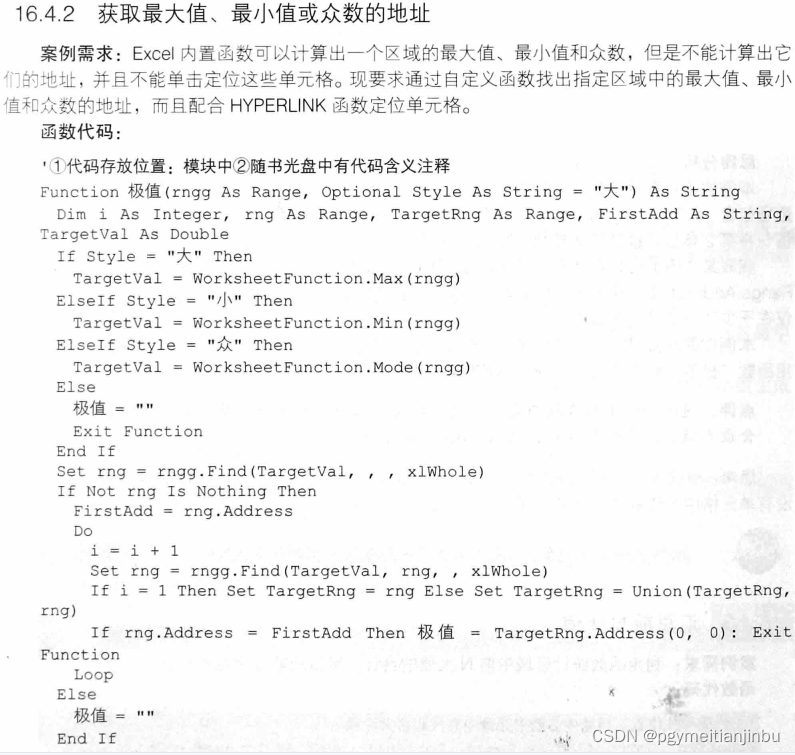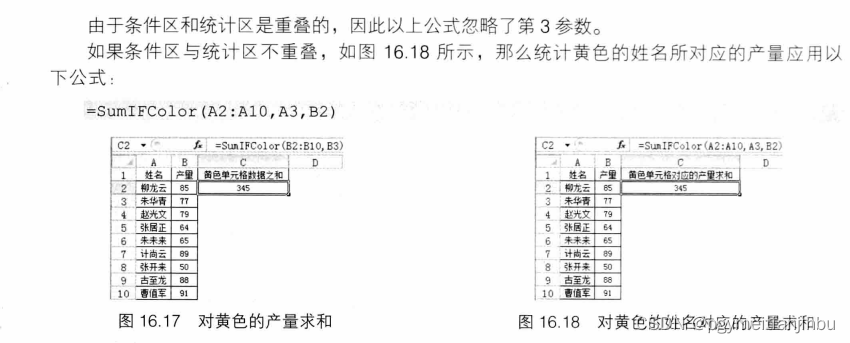vba中function(自定义函数) |
您所在的位置:网站首页 › vba如何使用函数计算 › vba中function(自定义函数) |
vba中function(自定义函数)
|
'自定义函数:顾名思义,就是自己定义的函数。 '为什么使用自定义函数:exce内置了很多有用的函数。但仍无法满足工作需求。 '自定义函数的作用:简化复杂的公式。可以和工作表函数相互嵌套使用 ' ' ' Function 函数名(参数1,参数2....) ' 代码 ' 函数名=代码执行的结果 ' End Function ' '1.函数名称可能有函数,也可以像now,today,rand等函数一样不需要任何参数 Public Function stname() stname = ActiveSheet.Name '返回当前工作表名 End Function Public Function wbname() wbname = ThisWorkbook.Name '返回工作簿名 End Function '有参数的自定义函数 Function nas(num As Integer) '提取工作表名或工作簿名 If num = 0 Then nas = ActiveSheet.Name ElseIf num = 1 Then nas = ThisWorkbook.Name End If End Function '1.自定义工作函数的调用 Function wbname() wbname = ActiveWorkbook.Name End Function Function wbnames() i = InStr(wbname, ".xls") '调用自定义的工作表函数,找到.xls所在的位置 j = Left(wbname, i - 1) '调用自定义的工作表函数 wbnames = j End Function '2.自定义工作表函数的编写与运用范围 ' '自定义工作表函数的代码只能编写在:标准模块中,不能在工作表中或thisworkbook中 '到目前为止我们编写的自定义函数只能在当前工作簿运行。要在所有工作簿中运行则: 'A.将编写在标准模块中的自定义函数代码保存为:加载宏。 'B.将加载的宏保持运用即可 ' '提示:与应用程序事件程序的操作方法相似
参数不定的自定义函数:
参数值默认和参数缺省:
案例:返回不重复随机数(结果是数组) Function sjs(最小值 As Integer, 最大值 As Integer, 所需个数 As Integer) Application.Volatile Set d = CreateObject("scripting.dictionary") Do i = Application.RandBetween(最小值, 最大值) d(i) = "" Loop Until d.Count = 所需个数 sjs = d.keys End Function Sub dd() Set d = CreateObject("scripting.dictionary") Do i = Application.RandBetween(1, 9) d(i) = "" Loop Until d.Count = 4 sj = d.keys End Sub 案例2: Function celljoin(区域 As Range, Optional 合并符 As String = "-") arr = Application.Transpose(Application.Transpose(区域)) celljoin = Join(arr, 合并符) End Function
Function 去除(rng As Range, Optional shuzi As Integer = 2) Set regx = CreateObject("vbscript.regexp") With regx .Global = True If shuzi = 0 Then .Pattern = "\d" '去数字 ElseIf shuzi = 1 Then .Pattern = "[a-zA-Z]" '去字母 ElseIf shuzi = 2 Then .Pattern = "[一-龢]" '去汉字 End If 去除 = .Replace(rng, "") End With End Function
案例3: Function jia(ParamArray num()) For Each n In num m = m + n Next jia = m End Function Function joins(ParamArray arr()) For Each ar In arr For Each a In ar txt = txt & a.Value Next Next joins = txt End Function '注意: '1.如果参数不定,那么不能指定参数的数据类型 '2.如果有不定参数,不定参数一定要写在最后。 ' 案例3: Function 身份证(rng As Range, Optional 提取内容 As String = "年龄") If 提取内容 = "年龄" Then 身份证 = Year(Now()) - (19 & Mid(rng, Len(rng) / 2, 2)) ElseIf 提取内容 = "性别" Then 身份证 = IIf(Mid(rng, 15, 3) Mod 2, "男", "女") End If End Function
下图用excel:
案例4:单元颜色求和(字典+自定义函数) Function COLORSUM(单元格区域 As range, 汇总的颜色 As range) Set d = CreateObject("Scripting.Dictionary") For Each Rng In 汇总的颜色 d(Rng.Interior.ColorIndex) = "" Next For Each ci In d.keys For Each Rng In 单元格区域 If Rng.Interior.ColorIndex = ci Then r = r + Rng.Value End If Next Next COLORSUM = r End Function
End Sub Function DD(rng As Range) '反转字符 For i = Len(rng) To 1 Step -1 a = Mid(rng, i, 1) b = b & a Next DD = b End Function (解释:)
易失性函数Volatile | Excel VBA
Function 不重复值(rng As Range) Set d = CreateObject("scripting.dictionary") For Each rn In rng d(rn.Value) = "" Next 不重复值 = d.keys End Function Function 不重复2(rng As Range, Optional num As Integer = 0) Set d = CreateObject("scripting.dictionary") Set regx = CreateObject("vbscript.regexp") With regx .Global = True If num = 0 Then .Pattern = ".+" '所有值的不重复 ElseIf num = 1 Then .Pattern = "[一-龢]+" '汉字不重复 ElseIf num = 2 Then .Pattern = "[a-zA-Z]+" '字母不重复 ElseIf num = 3 Then .Pattern = "\d+" '数字不重复 End If For Each rn In rng For Each m In .Execute(rn) d(m.Value) = "" Next Next 不重复2 = d.keys End With End Function
ps:如果上面看懂了,下面就不用看了,不然看的头疼!
ByVal是值传递,ByRef是地址传递 回顾11章中的内容: ByVal是值传递,ByRef是地址传递
好了,参数讲完,回归,function用法:
|
【本文地址】
今日新闻 |
推荐新闻 |

 案例:
案例:
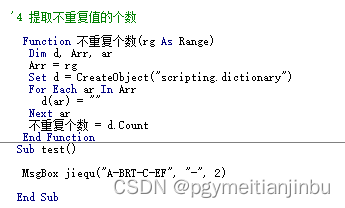
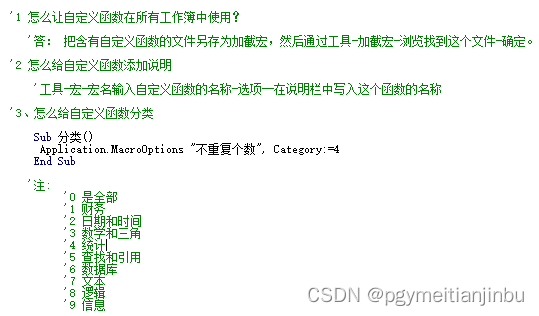
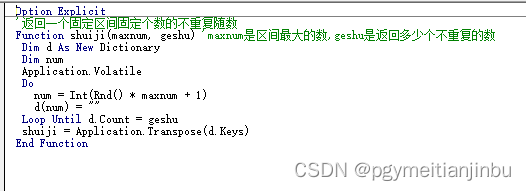
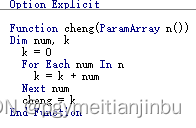
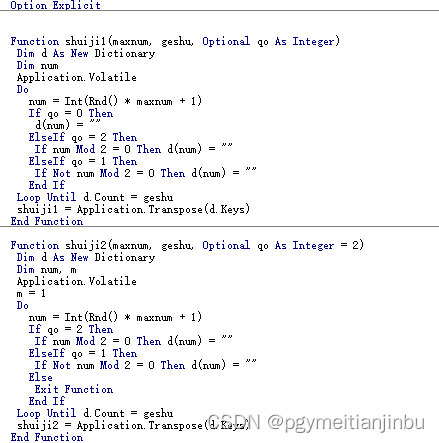



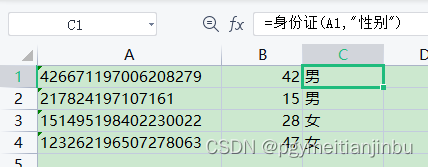

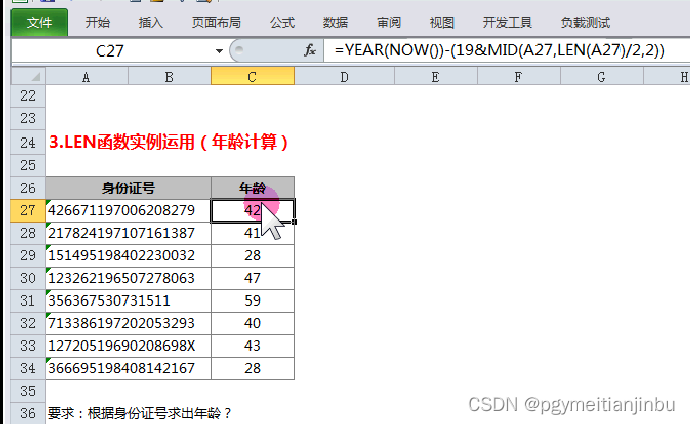
 Sub test() Set d = CreateObject("Scripting.Dictionary") Set 区域 = Application.InputBox("区域选择", , , , , , , 8) Set 颜色 = Application.InputBox("颜色选择", , , , , , , 8) For Each Rng In 颜色 d(Rng.Interior.ColorIndex) = "" Next For Each ci In d.keys For Each Rng In 区域 If Rng.Interior.ColorIndex = ci Then r = r + Rng.Value End If Next Next MsgBox r
Sub test() Set d = CreateObject("Scripting.Dictionary") Set 区域 = Application.InputBox("区域选择", , , , , , , 8) Set 颜色 = Application.InputBox("颜色选择", , , , , , , 8) For Each Rng In 颜色 d(Rng.Interior.ColorIndex) = "" Next For Each ci In d.keys For Each Rng In 区域 If Rng.Interior.ColorIndex = ci Then r = r + Rng.Value End If Next Next MsgBox r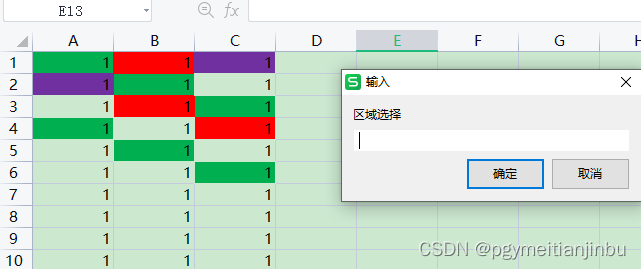
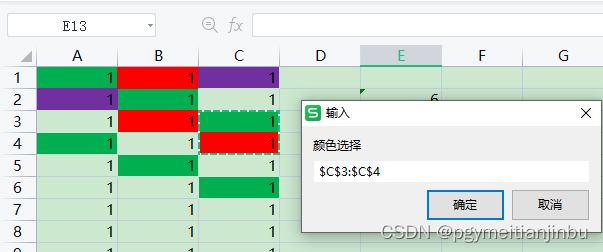

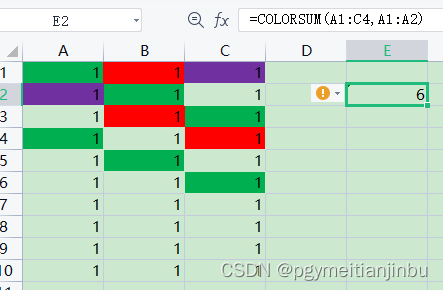

 Function 求和(rng As Range, Optional s As String = "") Application.Volatile Set regx = CreateObject("vbscript.regexp") With regx .Global = True .Pattern = "\d" & s Set mat = .Execute(rng) End With For Each m In mat n = n + m * 1 Next 求和 = n End Function
Function 求和(rng As Range, Optional s As String = "") Application.Volatile Set regx = CreateObject("vbscript.regexp") With regx .Global = True .Pattern = "\d" & s Set mat = .Execute(rng) End With For Each m In mat n = n + m * 1 Next 求和 = n End Function http://xixiacademy.com/html/ExcelVBA/Function/ExcelVBA_VolatileFunction.html
http://xixiacademy.com/html/ExcelVBA/Function/ExcelVBA_VolatileFunction.html